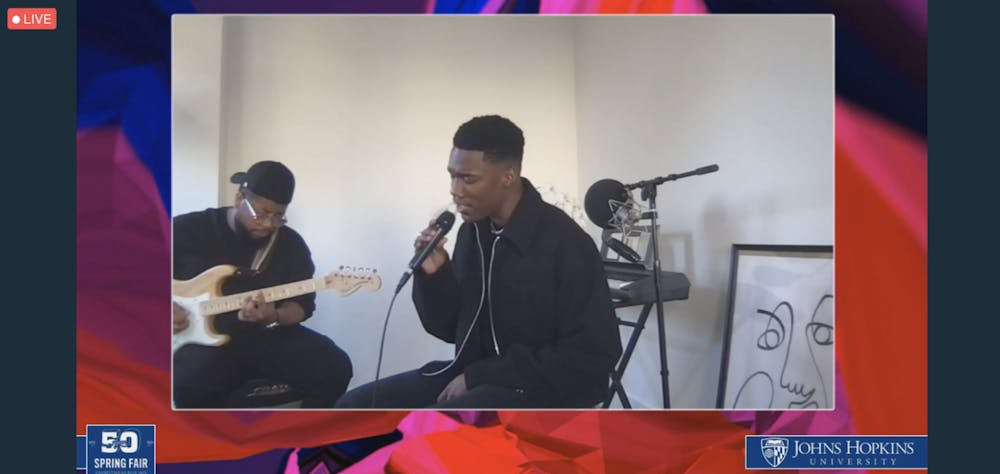With an introduction of the band Hunny by the Hopkins Student Organization for Programming, the awaited Spring Fair Concert began. Hunny was staged in front of a fish-eye camera, which gave a circular perception that could have been achieved in an in-person concert.
Singing in front of what appeared to be a tool storage, the lead vocal sang songs such as “Change Ur Mind” from the band’s album Yes. Yes. Yes. Yes. Yes. released back in 2019. The performance was not only coordinated by members’ synced movement, but also by their apparel. Hunny members dressed casually in jeans and sneakers, which were as trendy as their songs.
The vocalist addressed the online audience as though the concert were pre-pandemic. Phrases such as “Can I hear some claps?” and “I want to hear you sing!” brought the concert close to an in-person performance.
Although an in-person viewing party of the concert had been planned, an unexpected rainy weather forecast meant the screening was cancelled, moving its 25 registered students back to a virtual setting.
Sophomore Pranav Samineni commented on the concert’s virtual modality.
“For me personally, half the concert experience is the people you go with, the crowd, the frenzy and being so close to the performance,” he said. “Every single concert I’ve gone to in person has been unforgettable; I’m not sure if it was be the same over a screen.”
Hunny’s performance was followed by a Q&A session with the headlining artist, Giveon. The Grammy-nominated artist answered questions from studentswhile maintaining a casual atmosphere.
Giveon reflected on the trajectory of his sound.
“I think it’s constantly changing as I continue to grow as an artist,” he said. “My voice changes rapidly from project to project, and now I am more confident with a lot more control over my voice.”
Some artists that Giveon hopes to make music with are Adele, Frank Ocean, Beyoncé and Tame Impala. He noted that, if he did not produce music, he would have wanted another job related to storytelling, such as copywriting. Giveon is known for his storytelling; his famous song “Heartbreak Anniversary” expresses a perspective about relationships he finds uncommon among people in his generation.
Giveon addressed the fact that a dance to “Heartbreak Anniversary” is popular on TikTok.
“I love how you can’t control what someone feels when they listen to the song,” he said. “The story behind the song is the opposite of the dance.”
Compared to Hunny’s performance, Giveon’s was more conversational. His singing was sprinkled with brief explanations and comments from the artist himself, giving the audience freedom to explore possible interpretations. A single guitar supported the artist’s unique voice as he sang emotive songs.
Sophomore Rachel Gao was engaged by the cohesive performance.
“Giveon’s performance was very easy to follow along especially because of how he ordered his songs in a storytelling fashion,” Gao said. “Despite not giving a full history of each song, I could still understand what kind of topic the song was addressing.”
Through Giveon’s performance, I was reminded of the importance of structuring a presentation around a specific theme. In Giveon’s case, the theme of expressing emotions was tied to relationships. All his songs in the beginning were sung with purpose, with “Heartbreak Anniversary” making up the climax in the plot he was building.
Aside from losing the in-person aspects of a live concert, I realized that the emotions people feel when listening to artists are unaffected by the modality of the performance. It is possible that many others who listened to Giveon during this concert found a line from his song that they could strongly relate to, which brings me back to Giveon’s point that leaving people to open interpretation is a beauty in and of itself.





